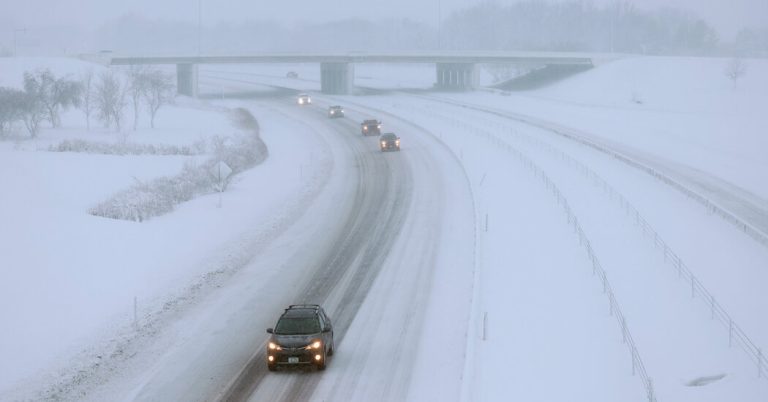In the wake of the storm, safety experts offered advice on how to keep people safe if they are stuck in their cars. Their top advice? be ready.
But first, a warning: Check the weather forecast before hitting the road, they say. If a snowstorm is forecast, it's best to stay put.
For those venturing out anyway, here are some important safety tips in case disaster strikes.
Pack a “go bag.”
Some important necessities to bring are food, water and a charged cell phone, said Dr. Ken Zafrin, a professor of emergency medicine at Stanford University and an emergency physician at Alaska Native Medical Center in Anchorage, Alaska.
Furthermore, experts said it would be helpful to have the following: jackets, blankets, sleeping bags, boots, gloves, hats, torches, medicine, wipes, shovel, first aid kit, mobile phone charger, ice scraper, extension cables. And a tank full of gas.
Better yet: Keep these items in your car all year round, experts say.
Stay warm.
You are on the road. Snow covers the ground. Traffic is crowded. What now?
First, don't leave your car, experts said. It is the safest place until the storm calms down.
“No matter how cold it is inside the car, it will be much colder outside,” said Gordon Giesbrecht, a professor at the University of Manitoba who has studied human responses to extreme environments.
He added: Resist the temptation to go out and find help. If you go out, you may become hypothermic or get lost.
Instead, you can generate heat by running the car for up to 10 minutes every hour, said Dr. Steve Mitchell, medical director in the emergency department at Harborview Medical Center in Seattle. Any longer and you could waste gas.
He added that human bodies naturally generate warmth, although young people lose heat faster. Wear a hat so you don't lose heat from your head.
Dr. Giesbrecht suggests maximizing body heat by hugging your chest and placing your hands on your armpits.
There's only one situation in which you should go out: If you need to check that your tailpipe is clean, to avoid the risk of carbon monoxide poisoning from the exhaust, experts say.

take care of yourself.
It's easy to feel isolated or afraid, but remember you're surrounded by other people who are stranded, too, said Dr. Grant Lipman, founder of Global Outdoor Emergency Support, an app that provides emergency tips.
He added: If you suffer from it, eat foods that contain a high percentage of fats and carbohydrates, which will give you energy and help generate warmth. This includes nuts, chocolate and candy.
If you run out of water, drink melted ice, Dr. Mitchell said. But don't drink alcohol. It will confuse you.
Keep wipes and a bottle handy if you need to go to the bathroom, Dr. Lipman said.
Although your phone may provide a needed distraction, it's important to conserve battery so you can make emergency calls, he said. Close your browser and any other battery-draining apps.
Instead, you can distract yourself by doing small exercises in the car, which will also help you stay warm, says Dr. Lipman.
What about pets?
Lean breeds, older dogs and puppies are more susceptible to hypothermia, according to the American Kennel Club.
Experts said you should include items for your pets in your emergency kit, such as a blanket and food. While you are in the car, you can sit with your pet to keep warm. Ideally, you can cover the pet with some type of insulation.
Be visible to rescuers.
When the engine is running, turn on your hazard lights or dome lights so rescuers can see you, experts said.
The National Weather Service suggests tying a brightly colored cloth to the antenna or door. When snow falls, raise the hood to signal for help.
Driving when the storm passes.
Drive slowly to avoid skidding, and note that it takes longer to slow down in icy road conditions, according to AAA. Accelerating too quickly can cause the wheels to spin out of control.
Keep your distance from other cars, trucks, and snow plows.
Tire pressure drops in cold weather. Drivers should check their tires monthly and before long trips, according to guidance from the National Highway Traffic Safety Administration.

